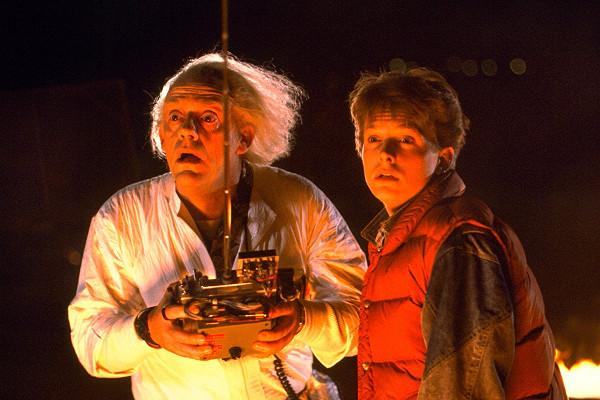Where Is Home Entertainment Heading?

Stop for a moment and think back to home entertainment 10 years ago. You were starting to build a library of Blu-ray titles, thankful that HD had finally made its way to disc, but 4K at home was a technology of the future and streaming was still a curiosity. Netflix was a hugely successful DVD mail-order company with a billion discs delivered but could see the writing on the wall when it started offering movies on demand over the internet in February 2007. Today, streaming is commonplace and home audio and video have reached unprecedented levels of quality, raising the question of what comes next? Looking ahead to the future, we reached out to Dr. Shawn DuBravac, founder of the Washington, DC-based consultancy Astra Insights, former chief economist for the Consumer Technology Association, and author of the New York Times Best Seller Digital Destiny: How the New Age of Data Will Transform the Way We Work, Live, and Communicate (Regnery, 2015). A well-regarded futurist and trendcaster, DuBravac writes frequently about technology with a focus on deciphering disruptive shifts.
S&V: Home entertainment has experienced dramatic change in just the past few years with dramatic performance increases in audio, through object-based sound and widespread availability of studio-quality hi-res music, and TV/video, through 4K resolution and high dynamic range. At the same time, there has been a move away from traditional AV components to soundbars and app-based all-in-one wireless audio systems that ultimately sacrifice quality for simplicity and convenience. What’s your take on this dynamic and its impact on home entertainment as we move into the future?
 Shawn DuBravac: Convenience will win every market when it comes to mass consumers. Consumers have repeatedly shown they are willing to trade-off quality for a more seamless experience that integrates into their lifestyle. At the same time, quality audio and video experiences are proliferating as technology is increasingly accessible to the average consumer. As technologies digitized, they became subject to Moore’s Law, which means they improve at a quicker rate. Another way to think about this is that technology gets cheaper for the same performance. When televisions first went digital in the late 1990s, we saw quality-adjusted prices decline at a faster rate than analog TVs had in the decades before. For example, analog TVs came down in price roughly 1 to 2 percent a year. Digital TVs, on the other hand, declined 1 to 2 percent a month, or 12 to 14 percent a year.
Shawn DuBravac: Convenience will win every market when it comes to mass consumers. Consumers have repeatedly shown they are willing to trade-off quality for a more seamless experience that integrates into their lifestyle. At the same time, quality audio and video experiences are proliferating as technology is increasingly accessible to the average consumer. As technologies digitized, they became subject to Moore’s Law, which means they improve at a quicker rate. Another way to think about this is that technology gets cheaper for the same performance. When televisions first went digital in the late 1990s, we saw quality-adjusted prices decline at a faster rate than analog TVs had in the decades before. For example, analog TVs came down in price roughly 1 to 2 percent a year. Digital TVs, on the other hand, declined 1 to 2 percent a month, or 12 to 14 percent a year.
Digitization has democratized quality and consumers have gained greater access to higher quality experiences. Over the very long run, all consumers will shift towards a high-end, high performance, high quality experience. Consider the path of earlier technologies. In the beginning of the automotive age, only the very rich owned cars. Today there is near ubiquitous access to vehicles and ownership rates are high with 95 percent of U.S. households owning a car. The same trend has played out with technologies like cellular telephony. In the early years of cellphones, the technology was expensive and only the rich had access. Today it is widely available.
The experience economy suggests consumers are most interested in high quality experiences. Over time, that will transcend a wide range of experiences. To understand what the future will look like, look at what technologies the rich consume today.
S&V: Voice control has been around for years but the meteoric rise of smart speakers, led by Amazon’s Echo, has pushed it to the forefront. Where do you see voice control — especially as it relates to audio/video and home entertainment — going over the next couple of years?
DuBravac: Voice is the next computer interface. Speech recognition has improved more over the last 30 months than over the 30 years before that and as a result it is becoming an incredibly important navigation tool across a wide variety of applications. Google reported last year that 20 percent of mobile search was already taking place via voice and it has grown from there. Today, about one in six households own a voice-activated digital assistant. A figure that will grow significantly over the next 24 months. The simplicity and intuitiveness of voice command suggests voice controls will become widespread in the years to come. At the same time, more objects are being digitized so in the future there will be more things we can address with speech.
S&V: What role do you see virtual reality and augmented reality playing in home entertainment a year from now and five years out?
DuBravac: Virtual reality and augmented reality remain nascent technologies and I believe that will be true for the next five to 10 years. Research suggests it takes seven years on average before we really start to unleash the capabilities of new technologies. History suggests video game developers are most willing to experiment with new technologies in the early years and this will be true with virtual reality and augmented reality. I also expect augmented reality will be heavily utilized in enterprise applications in the years to come.
Ultimately I believe mixed reality applications — applications that combine both virtual reality and augmented reality with what is happening in the physical space around us — have the most promise and potential. In the years to come we will likely see entirely new use case scenarios and entirely new business models leveraging these technological platforms. As a result, we will see entirely new entertainment experiences. Over time, we’ll also realize that these are primarily mobile technologies and the bulk of experiences using these technologies will show up there.
S&V: The market for headphones of all kinds — on-ear/in-ear, wired/wireless, passive/active noise cancellation, etc. — has exploded in recent years with an astounding number of high-quality options now available to consumers. What’s driving this trend?
DuBravac: Five trends have combined over the last few years to drive massive uptake in headphones. First is the significant growth in smartphones. In 2011 only 35 percent of individuals had a smartphone. Today nearly 80 percent of individuals have a smartphone.
Secondly, as smartphone ownership grew, we began using our smartphones for more than just communication. Astra Insights estimates we spend roughly 250 minutes a day on our phones and only 28 percent is communication activities like email, texting, or phone calls.





























































